I often drive past RAAF Base Darwin in the Northern Territory and recently noticed the ‘gate guards’, as they are affectionately called, appear to have had bit of a spruce up. Their last major refurbishment occurred back in 2013 so a polish of plaques and paint was a bit of welcomed attention I guess. Many who have lived in, worked in or visited Darwin may recognise these two unique historical icons.
The two Ferranti Bristol Bloodhound Mk. 1 Surface-to-Air missiles, No 7 & 8 now located outside the old main gate, have a historical connection with the defence of Northern Australia. Both were operated as part of the Royal Australian Air Force’s Number 30 Squadron – their roles specifically as Bloodhound SAM Detachment Flight “A”.
Originally re-formed and equipped with the Bloodhound Mk.1 at RAAF Williamtown in early 1961, No 30 Squadron and the detachment to Darwin operated for 8 years. It remains the only unit to operate a mid to high altitude Surface to Air missile system in the Royal Australian Air Force.
During the early 1960’s Konfronski (southern end) the almost defenceless nature of No 2 Control and Reporting Unit (2CRU) located in Darwin, N.T was exposed to potential enemy attacks by Tupolev Tu-16 Badgers. Although the 2CRU radar site was provided with some limited short range L60 Bofor Anti Aircraft guns under Australian Army control, the then Minister of Defence approved the assignment of Bloodhound Detachment Flight “A” to Darwin in May 1965. This action was a stop gap measure during the ‘Konfronstki’ until the Mirage III0 was introduced in full numbers to the RAAF’s fighter squadrons.
Initially only 4 complete launcher and rounds (missiles) were installed with 3 spare rounds as backup. Later during December 1965, as part of Exercise High Rigel with the RAF Vulcan bombers – Darwin Air Defence Exercises (ADEX), RAAF C-130A Hercules would bring four more complete launchers from Williamtown. The missile establishment at full strength would finally consisted of 8 missile pads and their associated buildings being located at Lee Point, not far to the north of the RAAF Base. Most of the RAAF inventory was eventually located in the north – 8 of the available 12 missile launchers and 14 out of 24 live missile ’rounds’ in Australia.
The Darwin based Bloodhounds had a short service life of only 3 years as this version had rapidly become outdated by new weapons technology and performance, and with the Dassault Mirage III being almost fully delivered and assigned the mid-high altitude defence role, by the end of 1968 the detachment and the remaining No 30 Squadron Bloodhounds were withdrawn and disbanded from service. During 1969 Bloodhounds No7 & 8 were relocated to their position outside the then RAAF Base Darwin main gate.
Up until the new entrance gate was built – visitors to RAAF Base Darwin have had to drive between the two missiles or park next to them while obtaining a visitor pass, before entering the base. Although there are a few other Bloodhound missiles located around Australia this pair have remained somewhat of an attraction for many years, with Darwin locals and visitors both inspecting and taking photo’s with now silent gate guards.
It is a credit to the restoration teams, both past and present, that have kept these two cold war ‘Sentinels’ preserved in such good condition so that they can represent an interesting and unique period of RAAF operational history. I hope they remain an interesting attraction in Darwin for years to come.
Some Specifications of the Bristol Bloodhound Mk.1
Weight: 2270kg
Length: 8.5m
Thrust: 2× Bristol Siddley Thor Ramjets, 4× solid fuel boosters (jettison after Ramjets thrust exceeds SRB)
Max Speed: M2.2
Range: 190km
Warhead: 91kg continuous rod with annular blast fragmentation (buzzsaw)
Guidance and Tracking: Semi-active radar
Cheers… Sid Mitchell
Nikon D7100, 18-300mm sandisk memory card

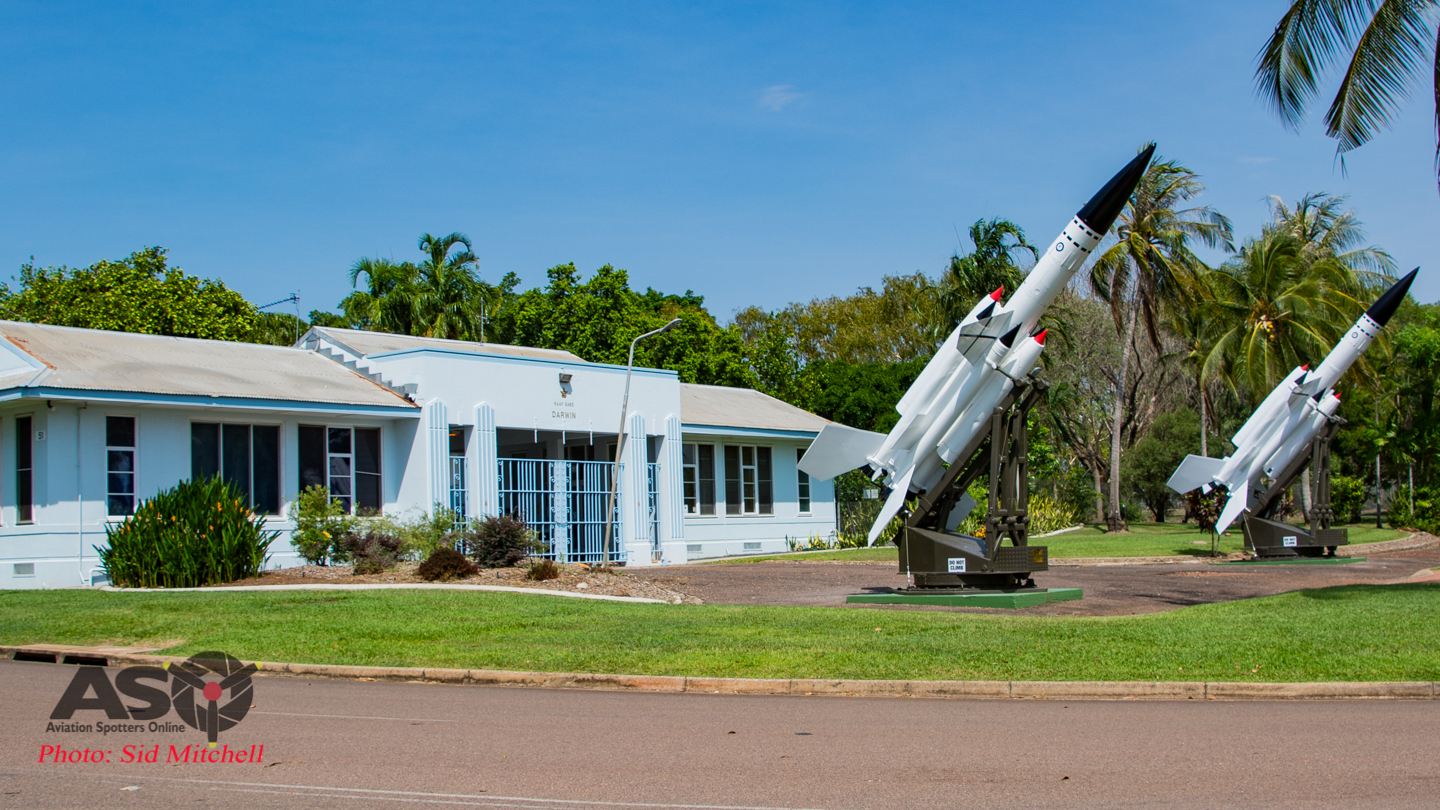

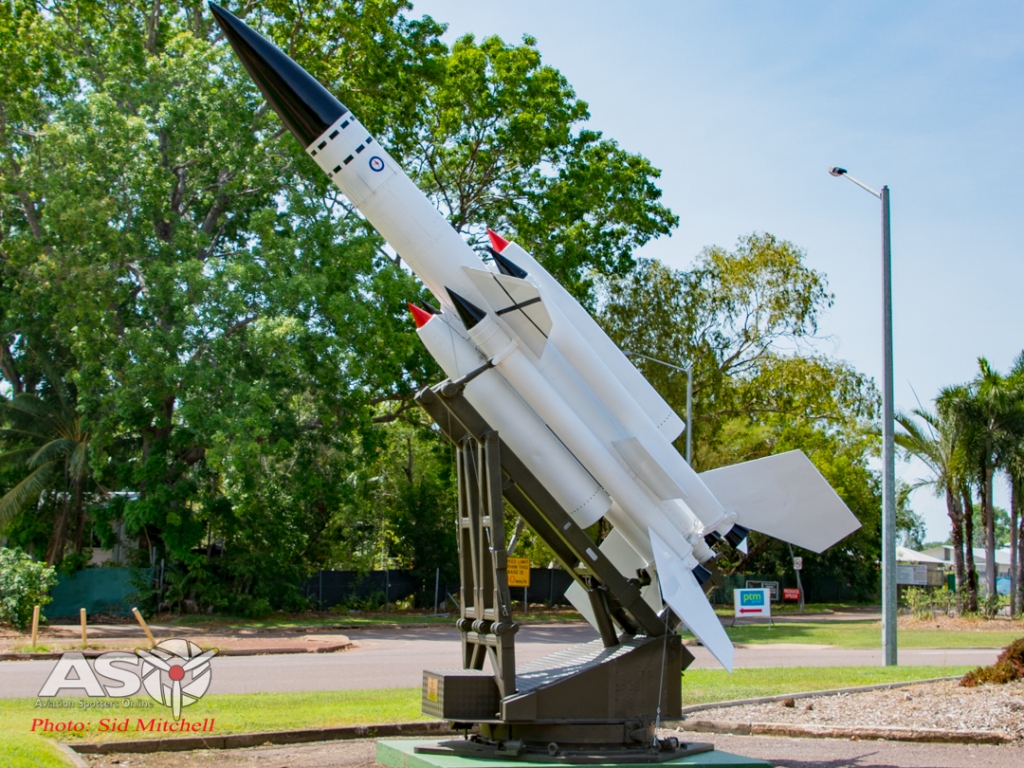
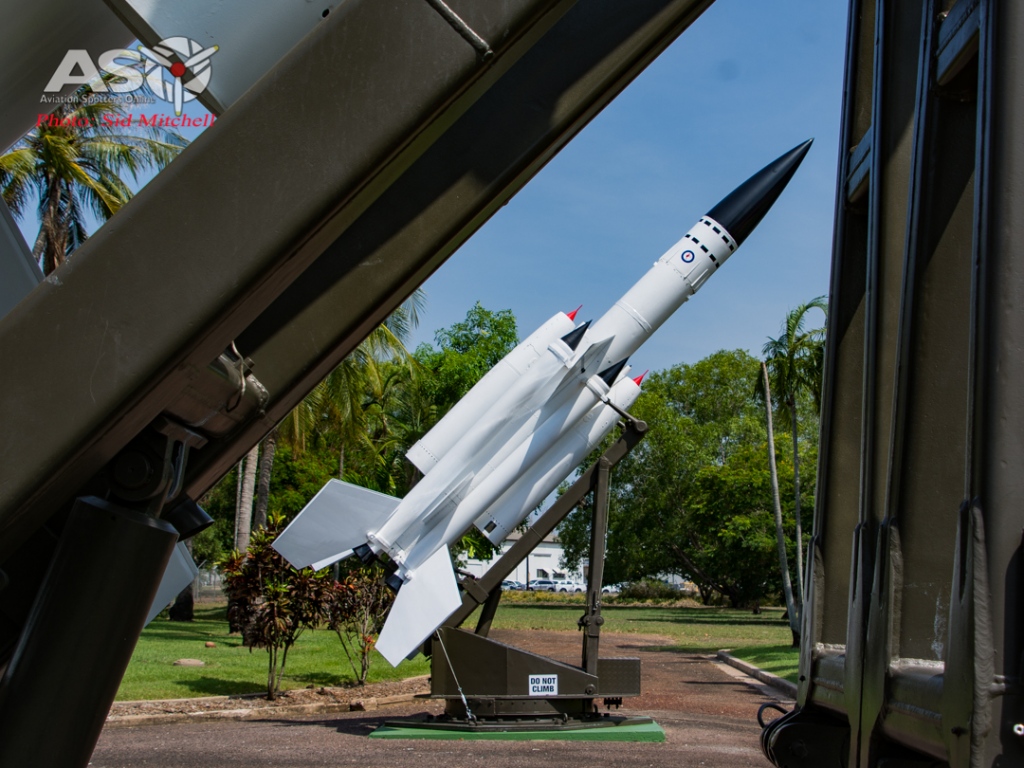


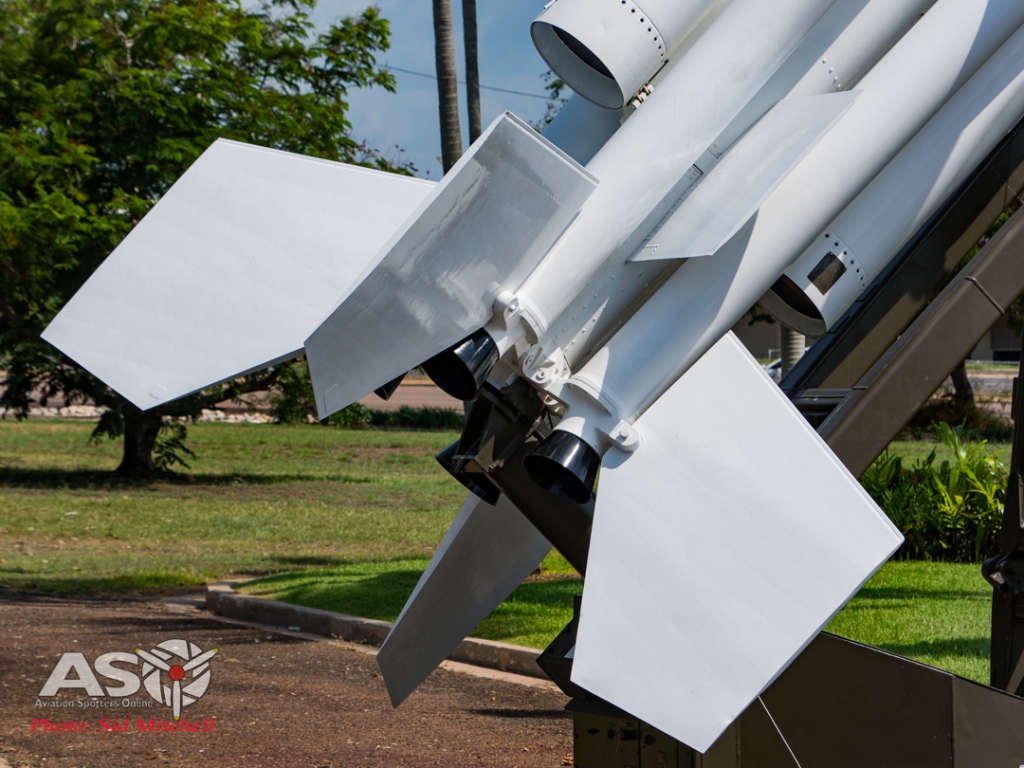

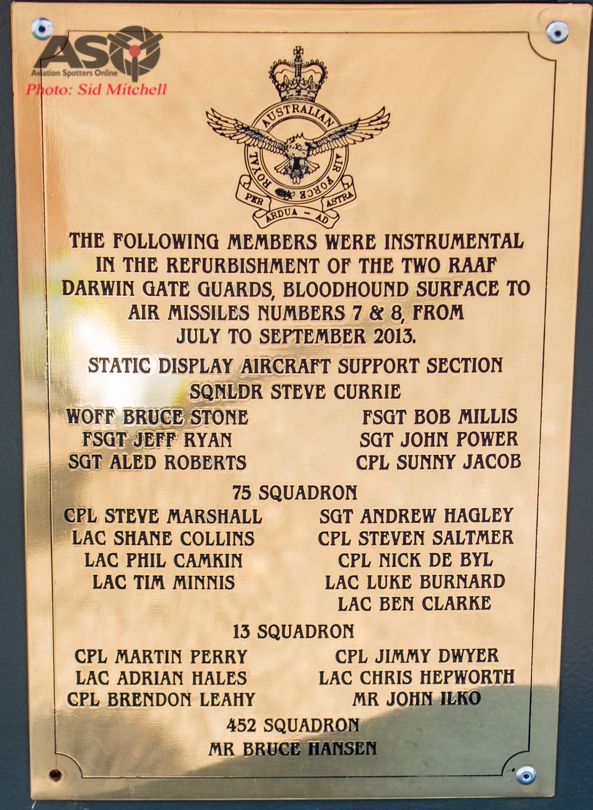


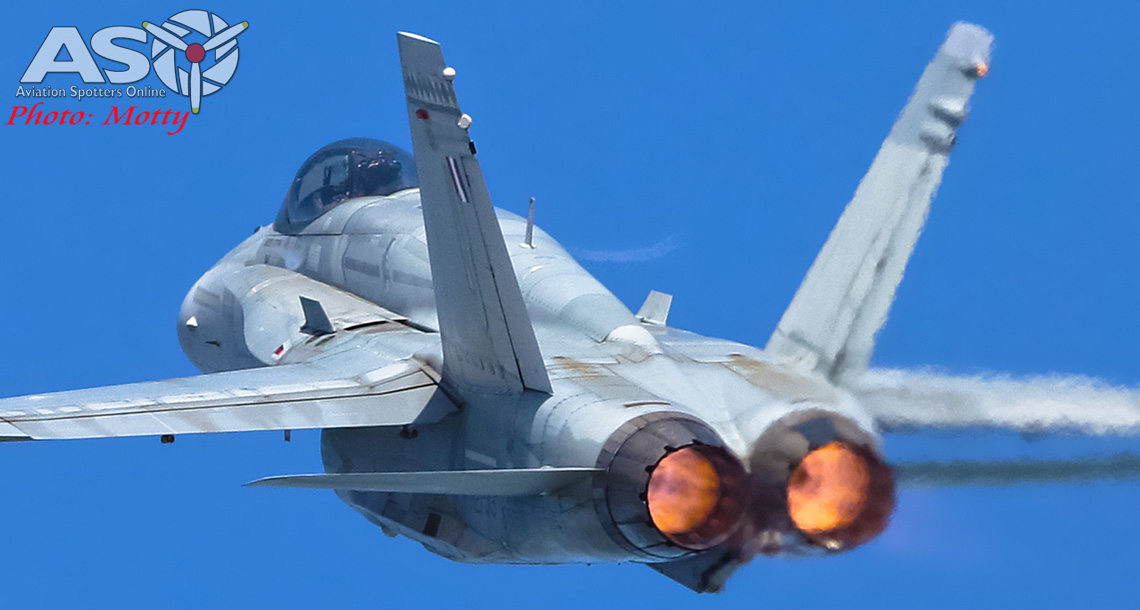






Great article with one small omission . The initial deployment of the bloodhound missiles was by road. But the deployment of the target illuminating radar units was by Army Landing Ship Mediun AV1354 Brudnell White, under escort of dangerous looking Flight Sergeants. Whilst loading a Newcastle stevedore was injured.
We had a grand time in Darwin. Thanks to 30 Squadron and their mates.
My dad went from 30 Squadron at Williamtown to Darwin. I think it was with the first 4 Bloodhounds being setup there.
When discussing Bloodhounds he always wants to know if there are any T83 TIR’s still in Australia? Probably wants to make it work 🙂
Another problem with the Mk 1’s was that the spare parts got involved in a Suez Canal blockade and never turned up here.
Thanks for the post.